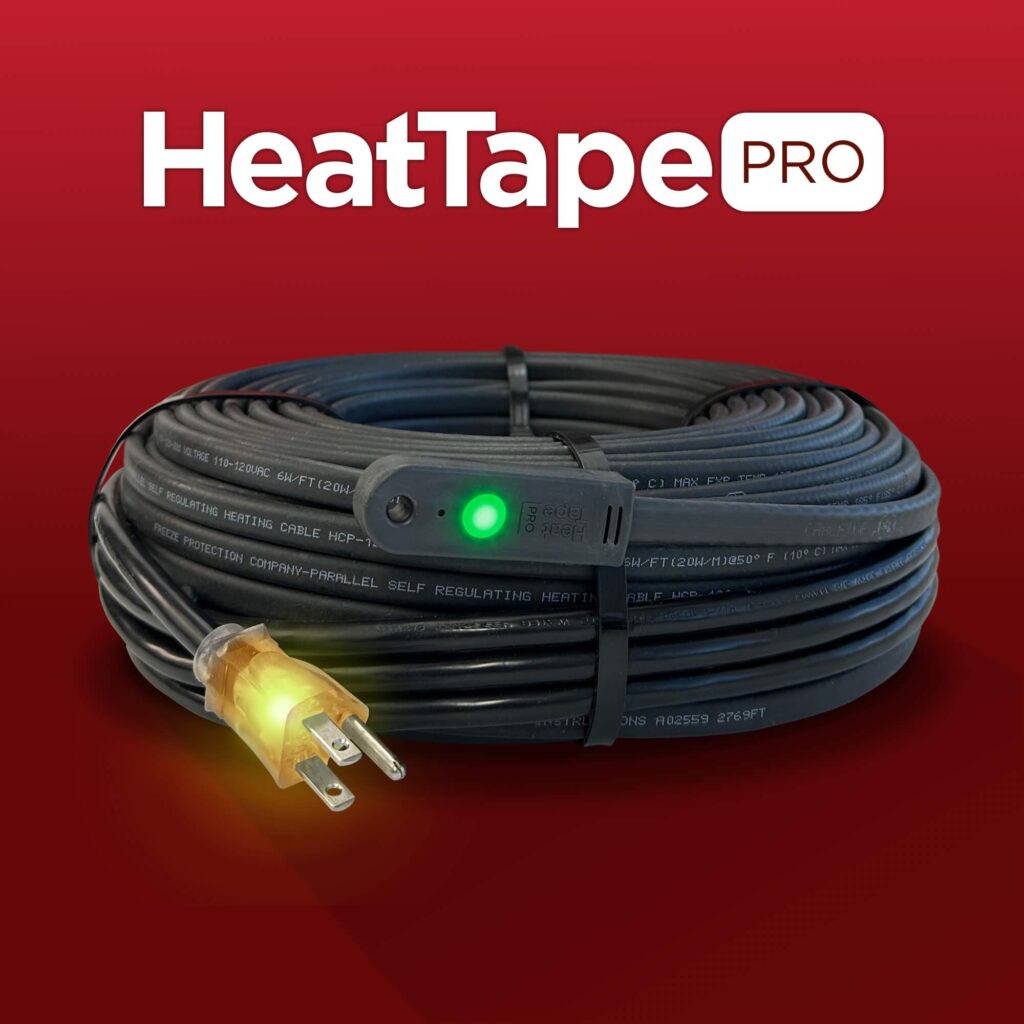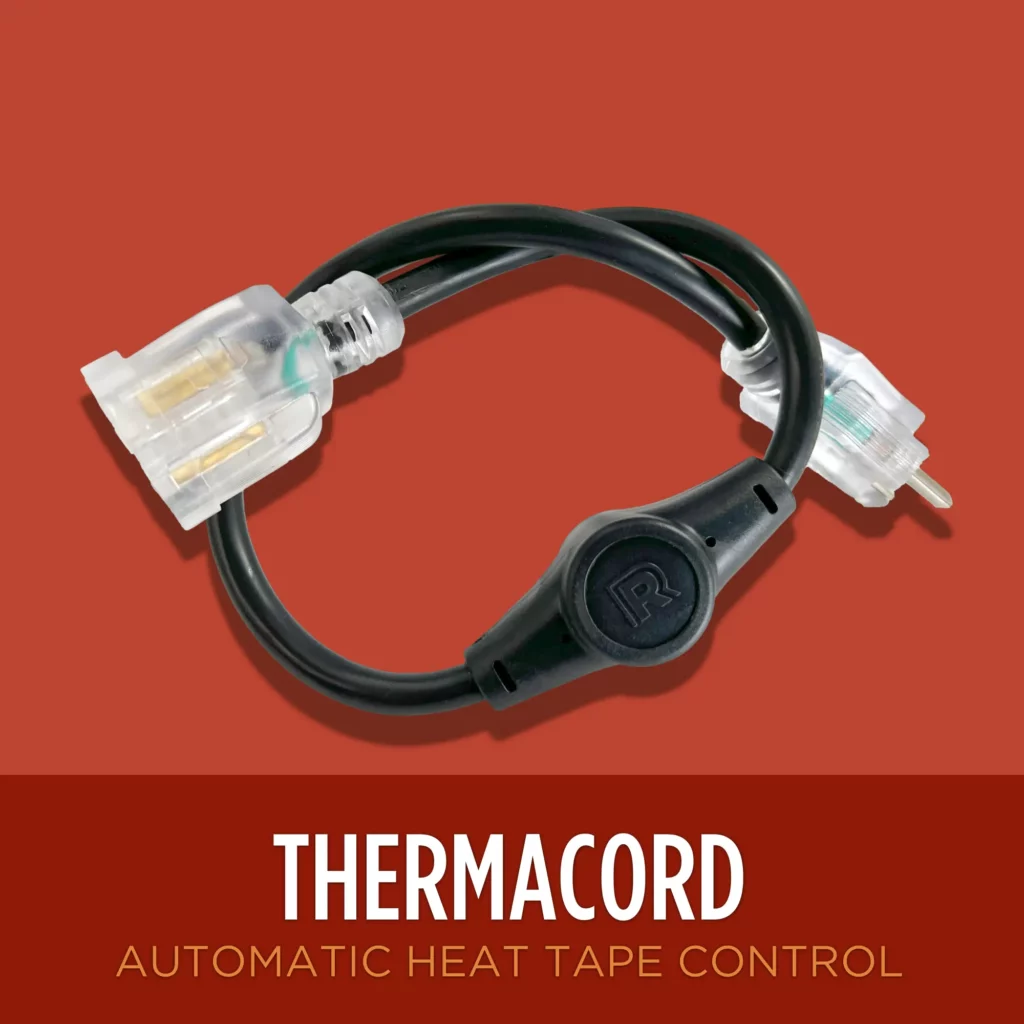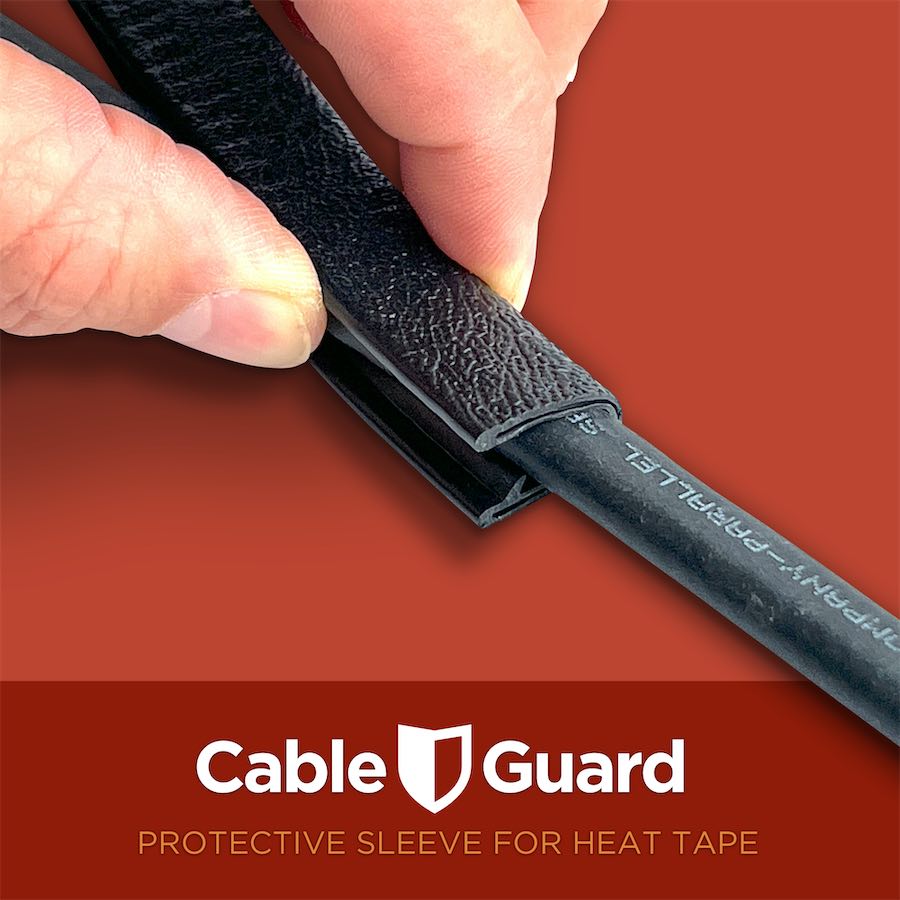How to Install Heat Tape On a Standing Seam Metal Roofs, Part One
Options for Metal Roof Heat Cable Clips
Historically, there have been two methods for installing heat cable on standing seam metal roofs: 1) Glue clips to the surface or, 2) Use compression-based roof clamps that grip onto the standing seam. Both are valid approaches but both have their drawbacks. Option one leaves nasty adhesive behind whenever the heat cable clips are removed and the clips can dislodge on occassion. Option two is effective but quite expensive, costing as much as $12 per clip location. The GVG Clip is a clever answer to those challenges.
The GVG Standing Seam Metal Roof Heat Cable Clip can be secured to the seams with the self-tapping sheet metal screws provided with the clips or can be glued to the seam using SureBond SB 190 Adhesive. Both methods will result in a strong point of connection for the heat cable system on a variety of standing seam metal roofs. Below we illustrate a system using screws into the standing seam, with an MKS-1022-2 Butyl Pad. This combination will create a watertight connection between the clip and the standing seam.

Heat Tape PRO™ heat cable can be installed inside ground drains to keep water flowing throughout the winter (See 3 in drawing). It is safe to use inside open drain pipes of any material including PVC, ABS, Copper and Steel.
Note, we show a ThermaCord™ Automatic Heat Cable Controller, which turns the heat cable on and off according to outdoor temperatures (See 4 in drawing). This heat cable control device turns the cable on at around 37º and off at 50º. Heat Tape Pro heat cable can also be used in underground drains as shown below.
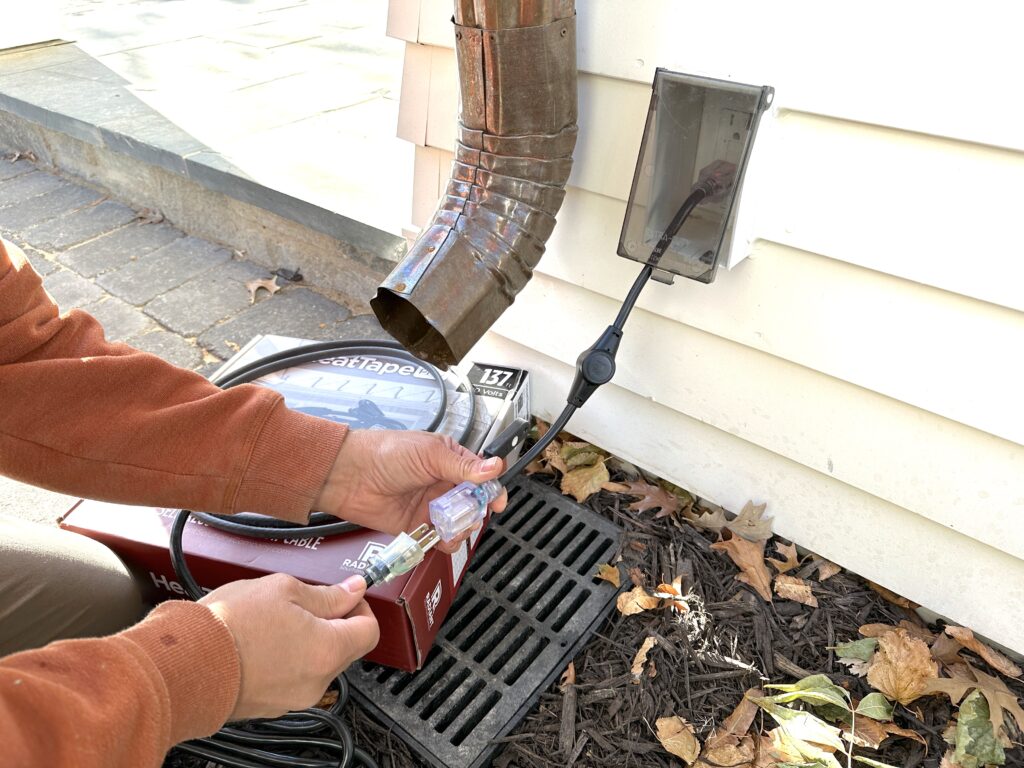
Simple, Low-Cost Heat Cable Controller
Plug the ThermaCord™ Automatic Heat Cable Controller into any outdoor outlet to turn heat cable on and off with changes in temperature.
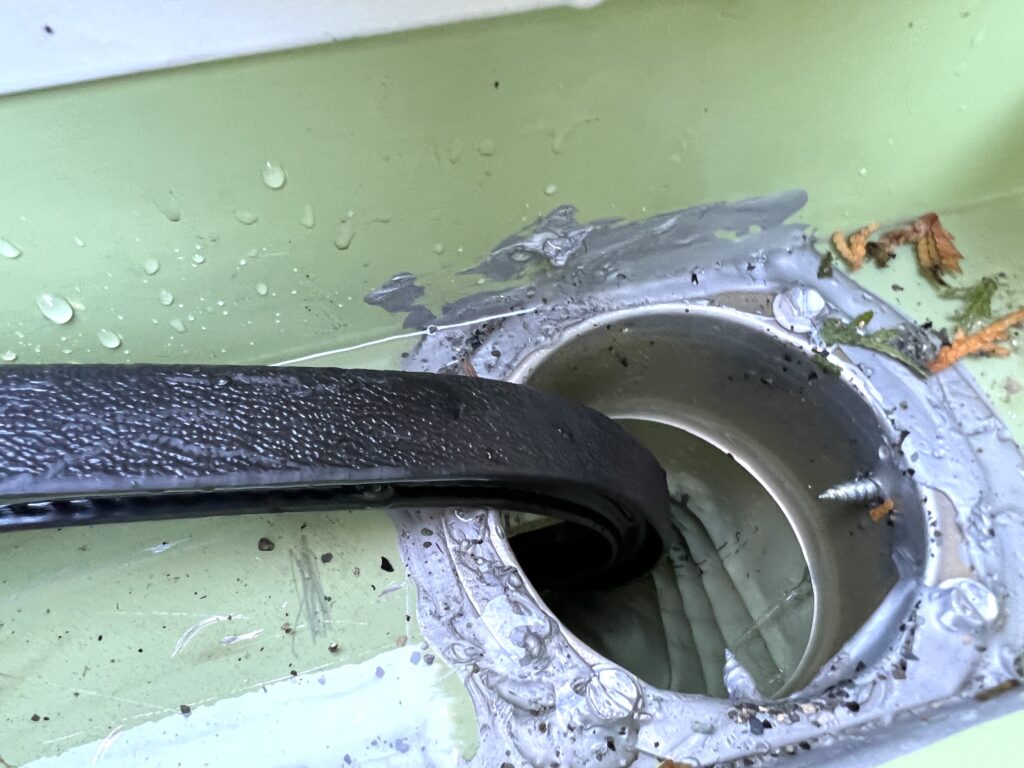
Downspout Hanger Locations
Most of our professional installers have moved away from old-school, metal downspout hangers and switched to CableGuard™, which protects expensive heat cable systems from damage against sharp edges and points. Zip screws kill heat cable!
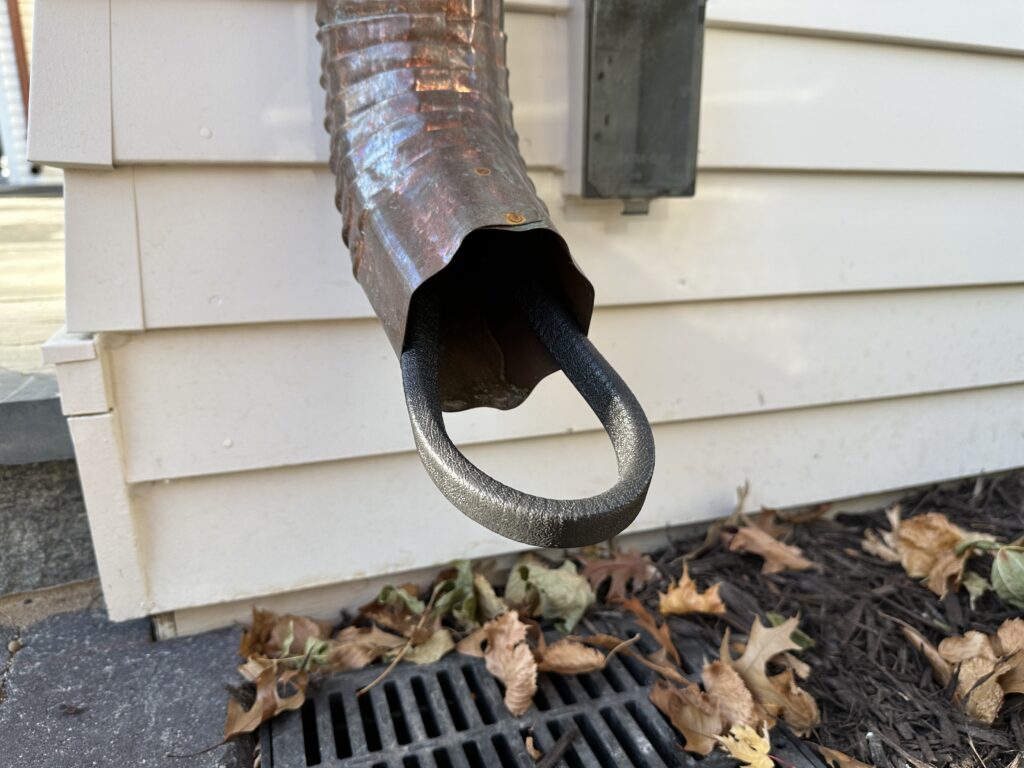
Heat Tape at Bottom of Downspout
CableGuard™ seen here at the opening of a downspout.
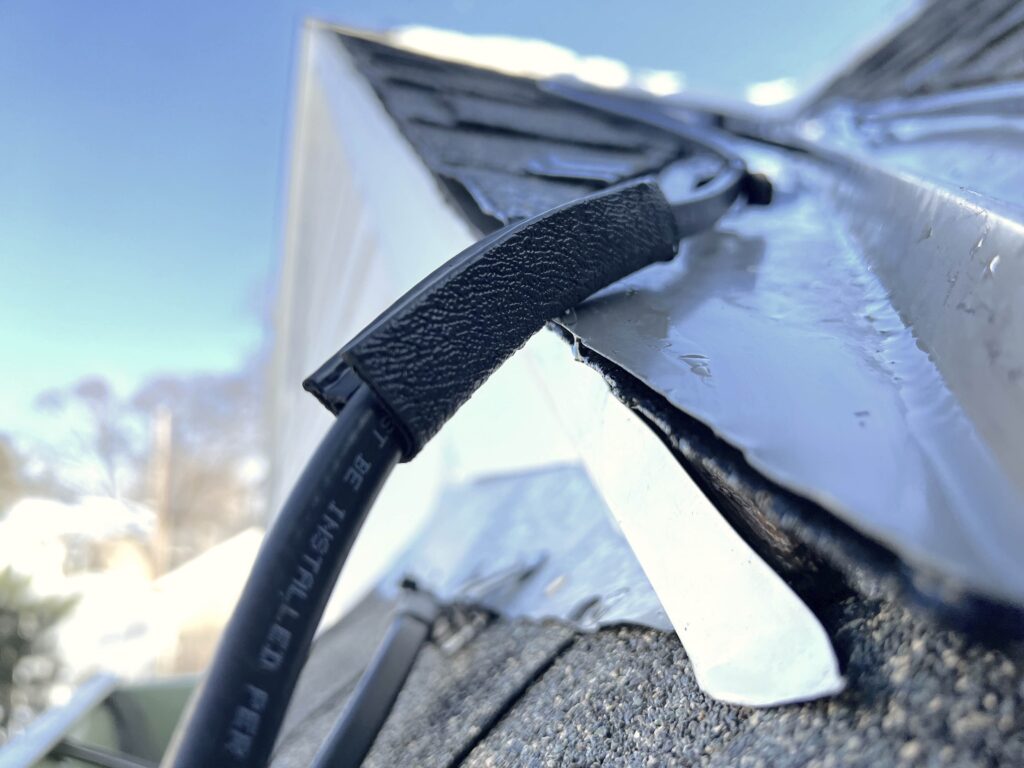
Extend Heat Cable Lifespan
Heat cable usually dies due to damage to the jacketing, which sometime occurs where cable comes into contact with sharp edges. CableGuard™ can be used to protect heat cable where anything threatens the integrity of the cable jacketing.
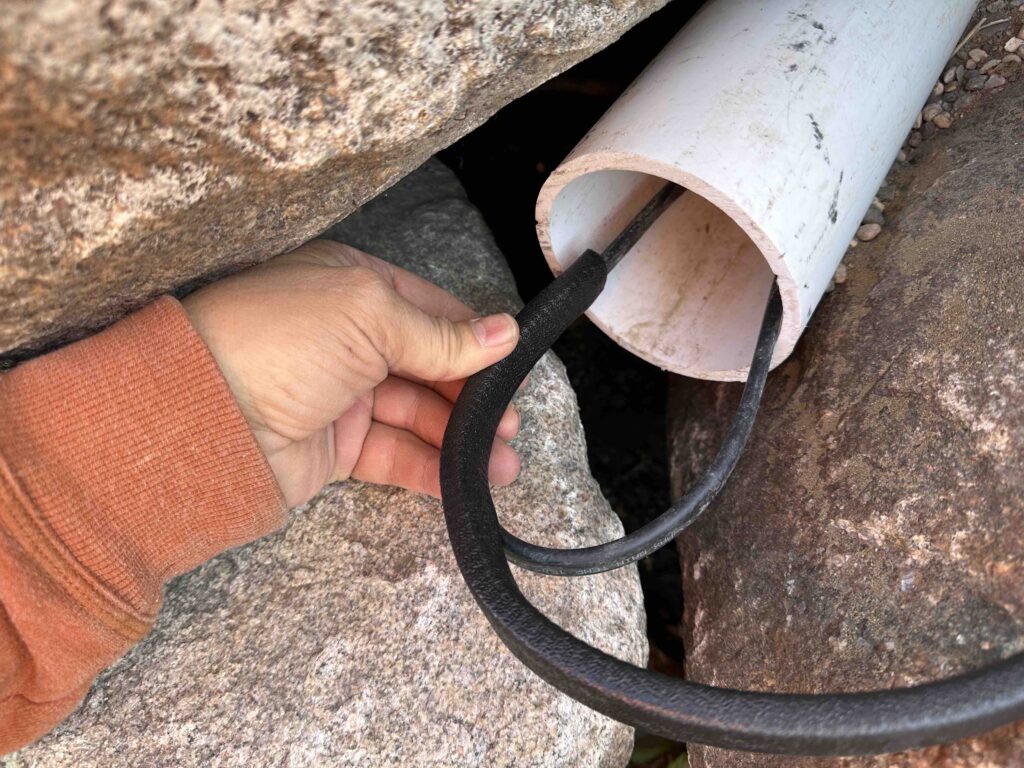
Protecting Heat Cable at Drain Opens
Heat tape is often damaged where it exits downspouts and drains. CableGuard™ can be used to protect heat cable at these locations.
Products Referenced
